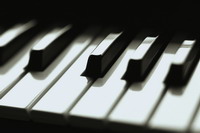Piano Sheets > Labi Siffre Sheet Music > (Something Inside) So Strong (ver. 2) Piano Sheet
(Something Inside) So Strong (ver. 2) by Labi Siffre - Piano Sheets and Free Sheet Music

About the Song
Other avaliable versions of this music sheet: Version 1 Version 2
(Something Inside) So Strong is a song written and recorded by British singer-songwriter, Labi Siffre. It was released as a single in 1987 and was the song that brought him back to mainstream popularity in his home country.
The song was inspired by a TV documentary Siffre viewed in 1985, in which a white soldier was seen shooting at black children. Appalled, he penned the song as an anti-Apartheid anthem, which was a very serious issue at the time, advising Africans to stand tall in the face of adversity.
The song was the biggest success Siffre would ever have in his career, peaking at #4 in the UK Singles Chart and bringing him out of self-imposed retirement and back into the public eye. Labi Siffre (born 25 June 1945) is an English poet, songwriter, musician and singer most widely known as the writer and singer of (Something Inside) So Strong, It Must Be Love and I Got The, the sampled.
Download this sheet!
About the Artist

Random article
Everything about piano sheet music Sheet music has a history of its own, dating back to the 19th century. In those days, musicians would play classic compositions using sheet music piano. Later on, when bands started performing, music sheets were back in vogue as a means to recreate these old compositions.
What is it?
Sheet music is nothing but a written notation of the piano notes. Depending on what musical composition the sheet music is for, the musical notes written will also differ. Most people have a wrong notion that it is only the popular compositions, which have recorded onto sheet music piano. However, several unfamiliar compositions have also been recorded using sheet music.
(More...)
